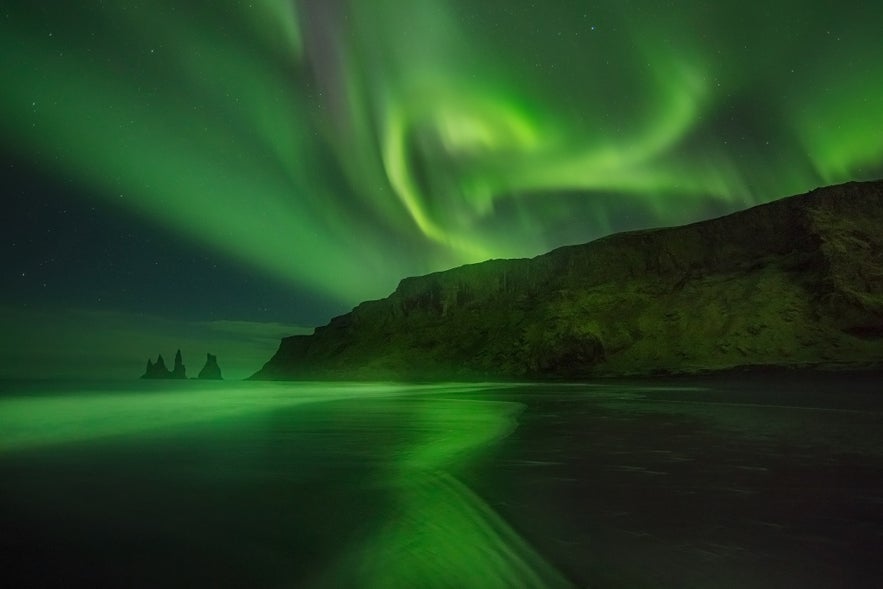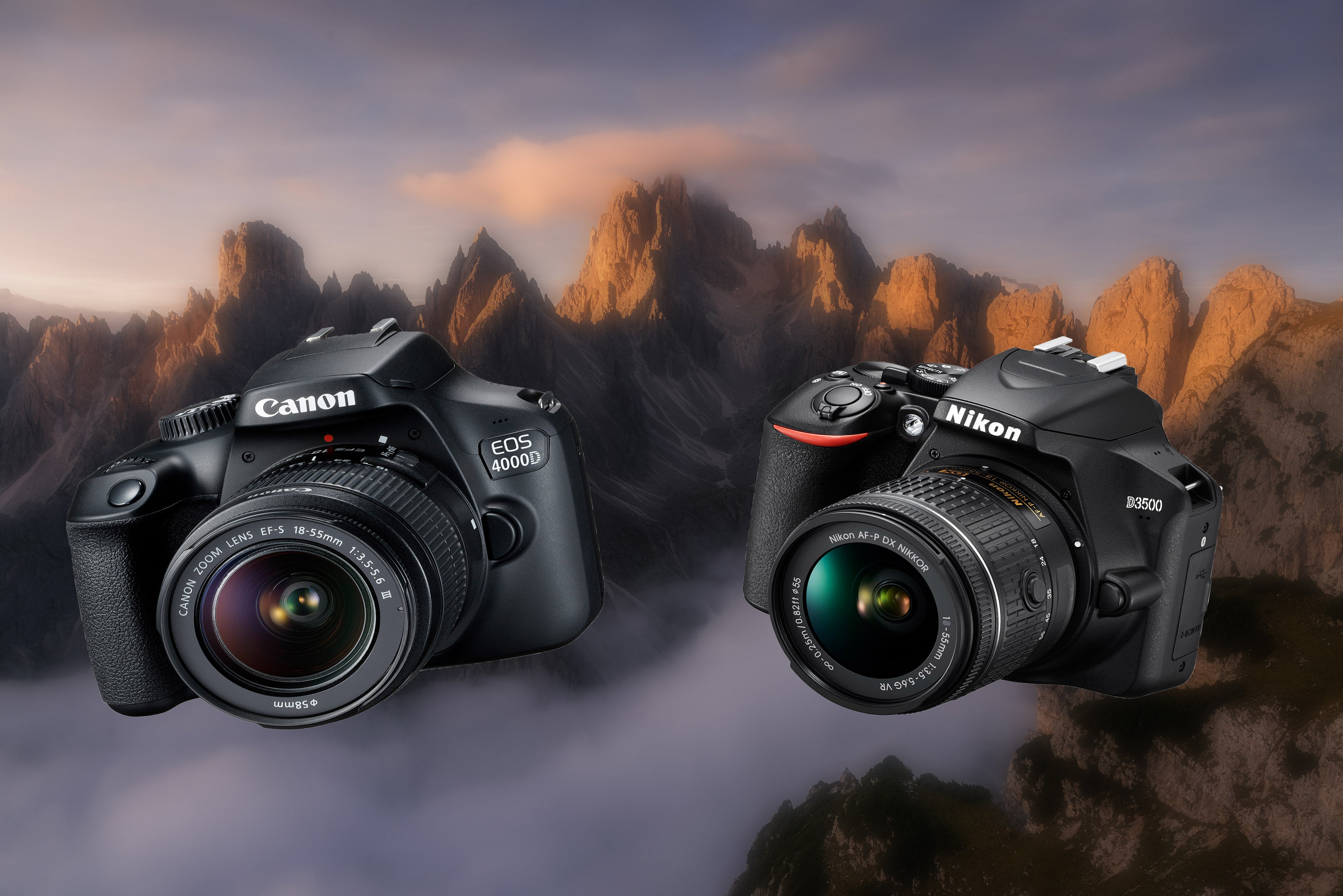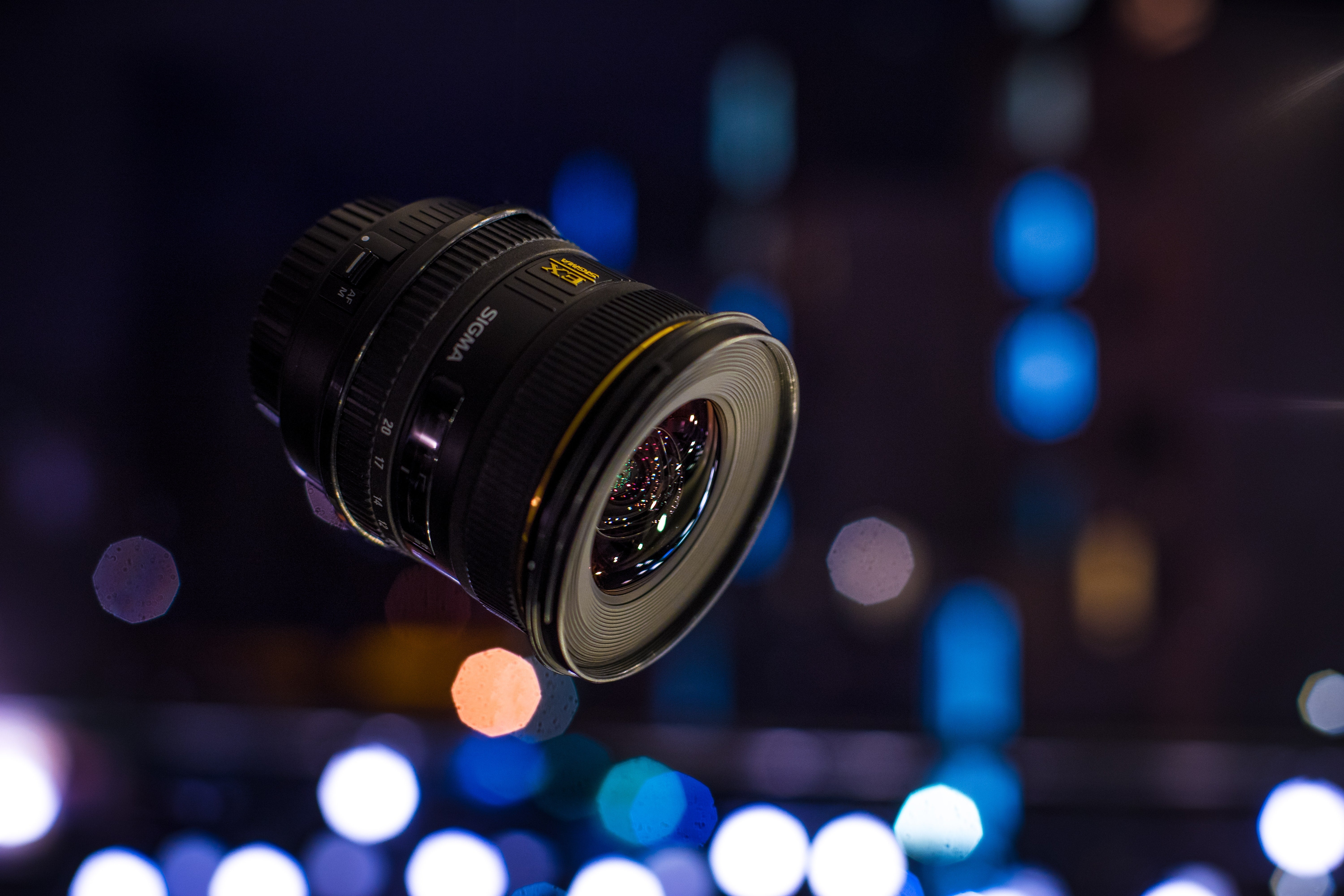
Night photography is one of the most challenging skills for amateur photographers to master. That’s because you need not only a solid foundation in photography, but also the correct tools. Besides a solid tripod, shutter release cable, and an interchangeable lens (ideally full-frame) camera. you also need a lens. In this article, we’ll explain some of the best lenses for night photography that you should have in your arsenal.
- Explore this article on The Best Camera Gear Recommendations for Photography in Iceland
- Discover these Camera & Gear Reviews
What Makes a Great Night Photography Lens?
Aperture
If your camera purchase came with a default zoom lens, it is probably not ideal as most kit lenses have a variable aperture that will change based on the focal length. For those serious about shooting quality night or low light photos, it’s best to invest in a lens with a constant aperture.
Whether you are planning to shoot photos at night or in low light conditions, you will need a lens with a fast aperture. What’s the best aperture for night photography? Ideally, the lens aperture should be f/2.8 or greater. Many zoom lenses have a fixed aperture of f/2.8, such as the 16-35mm f/2.8 or 24-70mm f/2.8. Although they are pricey, they are well worth the extra cost due to their flexible zoom range and their ability to shoot at f/2.8, which is ideal for shooting in low light.
However, the most ideal lenses will perform at even faster apertures of f/1.8, f/1.4, or even f/1.2. The only catch is that these lenses (known as prime lenses) are often not zoom lenses and instead have a fixed focal length. Prime lenses can also be costly since they are able to shoot in ultra low lighting scenarios.
 The most ideal lenses for night photography will perform at even faster apertures of f/1.8, f/1.4, or even f/1.2. Photo by: 'Suzi Pratt'.
The most ideal lenses for night photography will perform at even faster apertures of f/1.8, f/1.4, or even f/1.2. Photo by: 'Suzi Pratt'.
Focal Length
In addition to aperture, you’ll also want to consider focal length. For landscapes or astrophotography, wide angle lenses that span at least 16-24mm are preferred in order to capture as much of the scene as possible. However, you’ll likely want to avoid ultra wide-angle fisheye lenses that are typically in the 8-10mm range, as these lenses result in distorted images.
 Focal length plays an important role in the types of night images you'll be able to take. Photo by: 'Unsplash'.
Focal length plays an important role in the types of night images you'll be able to take. Photo by: 'Unsplash'.
Anti-Lens Flare and Ghosting Coating
If you use a cheap lens or lens filter, your images may suffer from lens flares that reduce contrast or vibrancy of colours. Ghosts, or odd-shaped halos, may also appear in your photos. To prevent lens flares and ghosts, many high-end lenses and filter manufacturers apply coating to the front of the lens. Thus, it’s important to not only invest in a quality lens, but also lens filters that won’t lower the quality of your images (or simply remove all lens filters prior to shooting night or low light photos).
 Cheap lenses can reduce vibrancy of your images. Photo by: 'Unsplash'.
Cheap lenses can reduce vibrancy of your images. Photo by: 'Unsplash'.
Chromatic Aberrations and Coma
Two issues that low quality lenses can introduce into your photos are chromatic aberration and coma. Also known as colour fringing, chromatic aberration is an optical problem that results in purple fringing on the edges of your image. This happens when waves of light are being focused at different distances. The other issue is known as coma, which results in seemingly mysterious light sources in your images. Coma often appears in night photos of the Milky Way, stars, or cityscapes.
The effects of both coma and chromatic aberration are relatively easy to fix in Photoshop or other post production editing software. However, it is ideal to prevent or minimise these problems in camera. The best way to do so is to heavily research your lens of choice before purchase. Look for customer reviews, specifically any that call out coma or chromatic aberration as problems.
 Do your research before you invest in a lens for night photography. Photo by: 'Unsplash'.
Do your research before you invest in a lens for night photography. Photo by: 'Unsplash'.
Things to Consider Before Purchasing
Camera lenses that perform well in low lighting are notoriously expensive. If you only have the budget to purchase one lens for night or low light photography, it’s best to consider the multiple uses of each lens.
Aperture and Bokeh
In photography, aperture is important not only for low light shooting, but also for bokeh, or the blurred background that you’ll often see in images shot at fast apertures. Lenses with an f/2.8 will produce decent bokeh, but primes that shoot at faster apertures will result in even creamier bokeh backgrounds. Thus, if you plan to shoot portraits or images where good bokeh is helpful, a prime lens may be a better investment. However, prime lenses only offer one focal length, so you will get a lot more flexibility out of an f/2.8 zoom lens, such as the 16-35 or 24-70mm.
Crop Sensor vs Full-Frame
Before you buy a lens, examine your camera to determine whether it is a crop-sensor (APS-C) or full-frame camera. This is important to make sure that the lens you purchase is fully compatible with your camera. Also, consider that crop-sensor cameras have smaller sensors and thus will not perform as well in night photography as a full-frame camera will.
Best Lenses for Astrophotography and Night Landscapes
If you plan to shoot stars, the Milky Way, or landscapes at night, you will definitely want a wide angle lens. To capture stars, the lens will need to focus at infinity, so the ability to shoot in manual focus is also a must.
 If you plan to shoot stars, the Milky Way, or landscapes at night, you will definitely want a wide angle lens. Photo by: 'Suzi Pratt'.
If you plan to shoot stars, the Milky Way, or landscapes at night, you will definitely want a wide angle lens. Photo by: 'Suzi Pratt'.
The 16-35mm f/2.8 and 24-70mm f/2.8 (available for Canon and Nikon DSLRs, and Sony mirrorless) are excellent choices that also give you more flexibility for framing your shot from afar. Wide prime lenses at say 24mm or wider are also a good choice.
- See also: The Best Lenses for Wildlife Photography
Best Lenses for Indoor Events
Many indoor events (ie. concerts, performances) are held in low lighting conditions that may not allow for flash photography. This is when fast aperture lenses can also be handy.
The f/2.8 wide and midrange zooms listed above will again give you the most flexibility, but they will suffer in ultra low light conditions. If you want options that will allow you to shoot events handheld in low light, prime lenses of at least f/1.8 are the most ideal.
Whether you prefer a wide or midrange focal length is dependent on your photography style, but 35mm or 50mm is a widely appreciated range.
 You'll need a fast lens to be able to shoot in a nightclub. Photo by: 'Unsplash'.
You'll need a fast lens to be able to shoot in a nightclub. Photo by: 'Unsplash'.
Best Lenses for Night Portraits
Generally speaking, you’ll want a lens with a slight zoom for shooting portraits. Many portrait photographers love the 50mm or 85mm range for portraits and headshots, since the tighter focal range compresses the background, resulting in pleasing bokeh. However, wide angle prime lenses of 24mm or 35mm may also be preferred for environmental portraits that capture the subject in a specific setting.
- See also: Guide to the Aurora Forecast in Iceland
Top 8 Lenses for Night Photography
Note that this selection of lenses is generally available in a variety of lens mounts, but it’s important to check and make sure they will be compatible with your camera. These lens recommendations also span from being best for night photography, landscapes and night photography portraits.
 Check that these lenses are compatible for your camera before making a purchase. Photo by: 'Suzi Pratt'.
Check that these lenses are compatible for your camera before making a purchase. Photo by: 'Suzi Pratt'.
#8. 14-24mm f/2.8 - Available for Canon and Nikon DSLR, Sony Mirrorless
Until recently, this lens was only available for Nikon DSLR cameras. However, Sigma has bridged the gap by making this lens available not only for Canon and Nikon DSLRs, but also Sony mirrorless cameras. Most versions of this lens result in a 14mm image that is free of distortion, yet wide enough to capture full landscapes, the Milky Way, and more.
#7. 16-35mm f/2.8 - Available for Canon and Nikon DSLR, Sony Mirrorless
This wide angle zoom lens is ideal for generally having very little distortion even at its widest focal length. It has a reasonably fast aperture at f/2.8 and is the most ideal for capturing the Milky Way and other celestial phenomenon such as the Aurora Borealis. This is also a great lens for shooting real estate and architecture.
 Star photography is made easier with a fast aperture lens. Photo by: 'Unsplash'.
Star photography is made easier with a fast aperture lens. Photo by: 'Unsplash'.
#6. 24-70mm f/2.8 - Available for Canon and Nikon DSLR, Sony Mirrorless
Although not as wide as the 16-35mm, this mid-range lens is considered by many photographers as the one lens they would have with them on a desert island. The focal range of 24-70mm is incredibly useful for a wide variety of settings including event and product photography, and can also be used to shoot the night sky.
#5. Rokinon 14mm f/2.8
Fast aperture zoom and prime lenses are notoriously expensive, but this ultra wide angle lens by Rokinon is actually quite affordable. The only catch is that it is a manual focus only lens. If you plan to shoot night photography, this is ideal since you need to shoot in manual focus anyway. However, if you plan to use this lens outside of night photography and absolutely need autofocus, this lens isn’t ideal for you unless you have a modern camera with focus peaking settings to aid you in achieving manual focus.
 Manual focus will allow you to achieve sharp stars. Photo by: 'Unsplash'.
Manual focus will allow you to achieve sharp stars. Photo by: 'Unsplash'.
#4. 24mm f/1.4 - Available for Canon and Nikon DSLR, Sony Mirrorless
For those who want a wide-angle prime lens with autofocus, the 24mm f/1.4 is a great option. 24mm is just wide enough to capture parts of the Milky Way and a good amount of the night sky, and f/1.4 is a fast aperture for shooting handheld in low lighting scenarios. You can also use the lens for other purposes such as daytime landscapes or environmental portraits.
#3. 35mm f/1.4 - Available for Canon and Nikon DSLR, Sony Mirrorless
From here on out, these focal lengths aren’t as ideal of shooting wide landscapes or celestial phenomenon such as the Milky Way or Aurora Borealis, but they can still be used for night photography. 35mm is a favourite among documentary and street photographers as 35mm is the closest focal range to what your eye sees. While 35mm is broaching on too narrow for landscapes or the night sky, it can still be used for night photography purposes. However, you’ll find it the most useful for night portraiture or general street photography.
 35mm is closest to what the human eye sees. Photo by: 'Unsplash'.
35mm is closest to what the human eye sees. Photo by: 'Unsplash'.
#2. 50mm f/1.4 - Available for Canon and Nikon DSLR, Sony Mirrorless
The nifty fifty has long been heralded as the first lens that all beginners should buy for their cameras. That statement reigns true in the case of night photography, but you’ll want to heed the f-stop as 50mm comes in a variety of apertures. The 50mm f/1.8 is an affordable option, while 50mm f/1.2 is the most expensive. Sitting comfortably in the middle is the 50mm f/1.4,
#1. 85mm f/1.4 - Available for Canon and Nikon DSLR, Sony Mirrorless
The focal length of 85mm is ideal for portraits, but you could also use this telephoto lens to capture creative night photography as well. This lens is made by most major camera manufacturers including Canon and Sony. But Sigma has an 85mm f/1.4 Art lens that is worth looking into as it comes at a lower price point and offers high quality imagery.
So which lens is best for you? It depends on both your budget and what exactly you plan to take photos of. But in most cases, each of these lenses is flexible enough to be used in night photography and other scenarios, so it’s best to consider the ways you intend to use these lenses and make a choice appropriately.
About the author: Suzi Pratt is an event, food and architecture photographer based in the USA. You can find more of her work on her website, Instagram and YouTube.
Practice your night photography skills by shooting the Aurora Borealis! Join our 8 Day Northern Lights & Ice Cave Winter Photo Workshop in Iceland.











